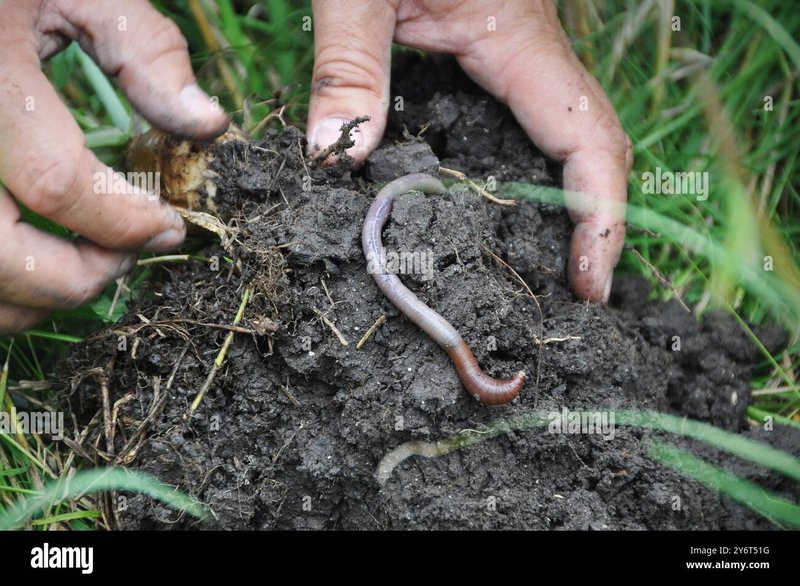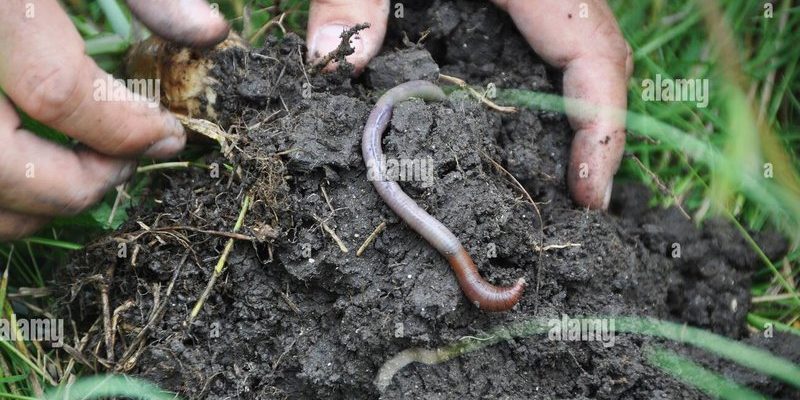
Imagine your garden soil as a cozy home for earthworms. Just like you’d want your home to be comfortable, they thrive in specific conditions. From moisture and pH levels to organic matter and texture, several factors come together to create the perfect environment. If you maintain the right conditions, you’ll be rewarded with a thriving worm population that helps aerate the soil and break down organic matter, making nutrients available for your plants.
In this article, we’ll uncover what earthworms need to flourish. Whether you’re a seasoned gardener or just starting out, understanding these soil conditions will help you create a vibrant ecosystem in your yard.
Why Earthworms Matter in Soil Health
Earthworms are often referred to as “soil engineers.” But what does that mean? Well, they do a fantastic job of breaking down organic matter, like dead plants and leaves, turning them into nutrient-rich compost. As they wiggle through the soil, they create tiny tunnels that allow air and water to flow more freely, promoting healthier roots.
You might be surprised to learn that a single earthworm can consume its own weight in organic matter every day! This means they contribute significantly to soil fertility. Plus, as they move, they help mix the soil layers, which ensures that nutrients are evenly distributed. Healthy soil means healthier plants, so fostering earthworm populations is key to a thriving garden.
However, not all soil is created equal. To create ideal conditions for your wriggly friends, it’s essential to know what they need.
The Role of Moisture in Soil
Moisture is one of the most critical factors for earthworms. They need **damp** soil to survive but don’t thrive in waterlogged conditions. Think of it this way: if you were stuck in a desert, you’d be desperate for water. Similarly, earthworms need moist soil to breathe through their skin. If the soil is too dry, they can become inactive and even die.
To maintain the right moisture level, here are some tips:
- Regular Watering: Keep your garden consistently moist, especially during dry spells. Aim for soil that feels like a damp sponge.
- Mulching: Adding a layer of organic mulch helps retain moisture, while also providing food for the worms.
- Monitoring Rainfall: Heavy rainfall can lead to overly saturated soil. Make sure to check drainage to prevent waterlogging.
By keeping moisture levels in check, you’re creating a welcoming home for earthworms.
Soil pH: Finding the Right Balance
Soil pH is another crucial factor for earthworm health. Most earthworms prefer a slightly acidic to neutral soil, with a pH level between **6.0 and 7.5**. If the pH is too high or too low, it can hinder their ability to survive and thrive.
Testing your soil pH is simple. You can purchase a home testing kit or send a sample to a local extension service. If your soil is too acidic, you can add lime to balance it out. Conversely, if it’s too alkaline, adding sulfur can help.
Remember, a balanced pH not only benefits earthworms but also helps plants absorb nutrients more effectively. It’s a win-win!
Organic Matter: The Earthworm Feast
Think of organic matter as the buffet for earthworms. They feast on decaying leaves, plant material, and other organic debris. More organic matter means more food for our wriggly friends, and ultimately, richer soil.
You can boost organic matter in your garden by:
- Composting: Creating compost piles from kitchen scraps and yard waste provides a steady supply of organic material.
- Plant Cover Crops: Growing cover crops during off-seasons adds nutrients and organic matter to the soil.
- Adding Organic Fertilizers: Products like manure or worm castings can enhance the fertility of your soil while serving as food for earthworms.
The more you provide for them, the better they’ll work to improve your soil health!
Soil Texture: The Right Mix Matters
Soil texture can significantly impact earthworm populations. Ideally, they thrive in **loamy soil**, which is a balanced mix of sand, silt, and clay. Loamy soil offers excellent drainage while retaining enough moisture, making it the perfect home for earthworms.
If your soil is too sandy, it may drain too quickly, leaving earthworms parched. On the other hand, heavy clay soil can become compacted and waterlogged, making it hard for them to move.
To improve soil texture, consider:
- Adding Organic Matter: As mentioned, adding compost or mulch helps improve soil structure over time.
- Rotating Crops: This can enhance soil diversity and texture, benefiting earthworm populations.
- Using Cover Crops: Their roots break up compacted soil, improving overall texture.
With the right soil texture, you’ll create a friendly environment for earthworms, and they’ll reward you with better soil health.
Avoiding Chemicals: Keeping It Safe for Earthworms
Here’s the thing: many gardeners love their plants but may not realize that the chemicals used can harm earthworm populations. Pesticides and herbicides can be toxic to these gentle creatures. If you’ve ever seen earthworms on the surface after heavy rain, it’s a sign that chemicals can impact their survival.
To protect your earthworm population:
- Choose Organic Options: When possible, opt for natural pest control methods, like introducing beneficial insects.
- Read Labels: If you must use chemicals, carefully read the labels to choose earthworm-friendly options.
- Educate Yourself: Understanding the impact of different gardening practices on soil life can help you make better choices.
Your goal is to create a thriving ecosystem where earthworms can thrive without fear of toxic exposure.
Creating an Earthworm-Friendly Habitat
Now that you know what earthworms need, how do you create the ultimate habitat for them? It’s a mix of all the factors we’ve discussed, but here’s a solid action plan:
1. **Test Your Soil:** Regularly check pH and nutrient levels to ensure they are conducive to earthworm survival.
2. **Maintain Moisture:** Water consistently and use mulch to prevent excessive drying out.
3. **Add Organic Matter:** Regularly top up with compost and organic fertilizers to create a feast for worms.
4. **Improve Texture:** Work on enhancing soil texture with cover crops and reducing compaction.
5. **Limit Chemical Use:** Embrace organic gardening practices to keep your soil ecosystem healthy.
Incorporating these practices will not only create a thriving environment for earthworms, but also result in healthier plants and a more productive garden.
In conclusion, nurturing a healthy earthworm population is about understanding their needs and creating the right conditions in your soil. By maintaining proper moisture, pH levels, organic matter, and avoiding harmful chemicals, you’re setting the stage for a flourishing garden. So grab your gardening tools, and let’s get to work on making your patch of earth a paradise for earthworms!

